Bartolome Esteban Murillo
- Full Name:
- Bartolomé Esteban Murillo
- Short Name:
- Murillo
- Date of Birth:
- 31 Dec 1617
- Date of Death:
- 03 Apr 1682
- Focus:
- Paintings, Drawings
- Mediums:
- Oil, Other
- Subjects:
- Figure, Scenery
- Art Movement:
- Baroque
- Hometown:
- Seville, Spain
Introduction
Today, Bartolomé Esteban Murillo is best known as the painter of sweetness and light. His demure, rosy-cheeked Virgins and mischievous, smirking street urchins have often caused the painter to be dismissed as sentimental, weak and inconsequential, unlike his far darker, more serious contemporaries, Ribera, Zurbarán and Velázquez. Due to this less than flattering interpretation of his paintings, until recently Murillo had virtually disappeared from the art history books.
This disappearing act is all the more incredible given that in the 17th and 18th centuries, Murillo was one of the most famous artists in all of Europe, far more famous even than Velázquez. Murillo's paintings were considered the triumph of the Spanish Baroque.
Although today Velázquez is cherished as the genius of the 17th century, in his own time Murillo's paintings were far more widely known outside of Spain, and were considered so valuable that at one point the king actually forbade their export. The sweetness and easy accessibility of Murillo's style was a welcome relief from the darkness and grave sobriety of artists like Zurbarán, and the inoffensive piety of Murillo's paintings made them perfectly suited for Counter-Reformation tastes. The artist was a pious, deeply religious man, and almost the totality of Murillo's oeuvre is religious in nature.
So where did it all go wrong? Today, art historians and museum curators are exploring that very question as they begin to revaluate Murillo's paintings. In fact, recent expositions and scholarly studies have revealed that Murillo's oeuvre is in fact less syrupy and far more consequential for the history of art than previously suspected. Soon, Murillo's reputation will be rightly restored to that of one of history's greatest painters.
This disappearing act is all the more incredible given that in the 17th and 18th centuries, Murillo was one of the most famous artists in all of Europe, far more famous even than Velázquez. Murillo's paintings were considered the triumph of the Spanish Baroque.
Although today Velázquez is cherished as the genius of the 17th century, in his own time Murillo's paintings were far more widely known outside of Spain, and were considered so valuable that at one point the king actually forbade their export. The sweetness and easy accessibility of Murillo's style was a welcome relief from the darkness and grave sobriety of artists like Zurbarán, and the inoffensive piety of Murillo's paintings made them perfectly suited for Counter-Reformation tastes. The artist was a pious, deeply religious man, and almost the totality of Murillo's oeuvre is religious in nature.
So where did it all go wrong? Today, art historians and museum curators are exploring that very question as they begin to revaluate Murillo's paintings. In fact, recent expositions and scholarly studies have revealed that Murillo's oeuvre is in fact less syrupy and far more consequential for the history of art than previously suspected. Soon, Murillo's reputation will be rightly restored to that of one of history's greatest painters.
Bartolome Esteban Murillo Artistic Context
Murillo's paintings bridge the dark drama and sometimes ascetic simplicity of Spain's early Baroque artists and the fanciful sensuality of the approaching Rococo era.
In his early career, Murillo was deeply influenced by the most prominent painter in Seville at the time, Zurbarán: from the master, the younger artist learned the expressive power of chiaroscuro as well as a predilection for relatively neutral, highly compressed pictorial space.
After visiting Madrid in 1658, however, Murillo discovered a new artist who would have a profound influence on the further development of his style: Peter Paul Rubens, who along with other painters represented in the Spanish royal collection showed Murillo the powerful potential of using a bright, bold palette and dynamic, expressive brushwork.
One of the most significant influences on Murillo was the pioneer of the Italian Baroque, Federico Barocci, who was completely overlooked by other Spanish painters of the Baroque era, but who was cherished by Murillo for the cheerful, sweet softness of his style.
Bartolome Esteban Murillo Biography
Murillo was born in Seville, Spain's artistic center and home to fellow artists Velázquez and Zurbarán. Although his father was a barber-surgeon, Murillo's uncle and cousins were artists, and the boy apparently showed an aptitude for the family craft from an early age. After being orphaned at age ten, Murillo was taken in by his older sister and her husband, who apprenticed him to the local painter Juan de Castello about two years later.
During his teen years and early twenties Murillo seems to have been rather undecided about what path to take but initially made a living by painting decorations for local fairs as well as canvases for export to the Americas, where the boy had family and where he planned to go in 1633 at the age of fifteen.
The decisive turn in Murillo's career came in 1645, when he married the wealthy Beatriz Cabrera y Villalobos (with whom he would have eleven children) and began to garner his first major commissions. Although Zurbarán was still Seville's leading painter in the 1640s, the student quickly overtook the master, and by the 1650s Murillo's fresh new style was the talk of the town.
Middle Years:
In 1658, Murillo visited Madrid, likely in the hopes of wooing Velázquez into throwing some important royal commissions his way. Murillo may not have gotten the commissions he wanted, but had the chance to visit the impressive royal collections, and the works of artists like Rubens and van Dyck, as well as the Italian paintings, would have an important influence on Murillo's style.
Murillo's success continued to grow as time passed, despite a series of tragedies; the death of several of his children and the death of his wife around 1663. Yet, none of these obstacles could stop Murillo's progress and in 1660, he achieved a lifelong dream by helping to found Spain's very first academy of art, the Real Academia de Bellas Artes de St. Isabel de Hungría, serving as the co-president in its first years of existence.
Advanced Years:
Murillo continued to garner major commissions and earn Spain's top accolades and honors throughout the 1660s and 1670s and was also widely acclaimed in Europe and the Americas. Sadly, in 1680, while the artist was painting the main altarpiece for the Capuchins Church in Cádiz, Murillo fell from the scaffolding. He died from his injuries a few months later, and was buried in front of his favorite painting in the Cathedral of Seville.
Bartolome Esteban Murillo Biography
Bartolome Esteban Murillo Style and Technique
Murillo's paintings were so wildly popular due to the artist's cheerful, sweet, easily approachable style, a welcome reprieve from the dark severity of Zurbarán. Although at the beginning of his career, Murillo was heavily influenced by the heavy chiaroscuro and Baroque drama of his predecessors, with time the artist developed his signature style.
Murillo's mature style evidences a syrupy sweetness most akin to the early pioneer of the Italian Baroque, Federico Barocci. By the 1650s, he had abandoned his early Caravaggesque chiaroscuro and the severity of Zurbarán in favor of unadulterated sentimentality.
It was Murillo's trip to Madrid in 1658, however, that proved key in the evolution of the artist's style: while at court, he had the chance to see paintings by Rubens and Italian Renaissance artists, which taught him to use warmer tones, richer colors, thicker brushstrokes and brilliant highlights.
Murillo's style continued to evolve to the very end. In his last decade of life, Murillo took Rubens's lesson even closer to heart: during this period, his brushwork became looser and more visible than ever before, sometimes even to the point that the canvases appear unfinished. Murillo also reduced his palette to the more sober hues of mauve, grey, brown, and carmine, making his late style more refined than in any previous period.
Murillo's techniques were just as distinct from his Spanish contemporaries as his style. Murillo was unusual for a Spanish artist not only for his immediate and widespread fame, but for his prolific drawings. Although drawings abound for most of the top artists of the Baroque (with the notable exception of Caravaggio), very few drawings are known by the painters of the Spanish Baroque.
Murillo, on the other hand, drew prodigiously in preparation for his paintings, using his drawings to work out problems of composition, light and shade.
Bartolome Esteban Murillo Style and Technique
Murillo's mature style evidences a syrupy sweetness most akin to the early pioneer of the Italian Baroque, Federico Barocci. By the 1650s, he had abandoned his early Caravaggesque chiaroscuro and the severity of Zurbarán in favor of unadulterated sentimentality.
It was Murillo's trip to Madrid in 1658, however, that proved key in the evolution of the artist's style: while at court, he had the chance to see paintings by Rubens and Italian Renaissance artists, which taught him to use warmer tones, richer colors, thicker brushstrokes and brilliant highlights.
Murillo's style continued to evolve to the very end. In his last decade of life, Murillo took Rubens's lesson even closer to heart: during this period, his brushwork became looser and more visible than ever before, sometimes even to the point that the canvases appear unfinished. Murillo also reduced his palette to the more sober hues of mauve, grey, brown, and carmine, making his late style more refined than in any previous period.
Murillo's techniques were just as distinct from his Spanish contemporaries as his style. Murillo was unusual for a Spanish artist not only for his immediate and widespread fame, but for his prolific drawings. Although drawings abound for most of the top artists of the Baroque (with the notable exception of Caravaggio), very few drawings are known by the painters of the Spanish Baroque.
Murillo, on the other hand, drew prodigiously in preparation for his paintings, using his drawings to work out problems of composition, light and shade.
Bartolome Esteban Murillo Style and Technique
Who or What Influenced Bartolome Esteban Murillo
Francisco de Zurbarán:
Young Murillo would hardly have been able to escape the influence of Zurbarán, the most popular artist in Seville during the period in which Murillo was training to become a painter.
From Zurbarán, Murillo would have learned the power of dramatic chiaroscuro and realism that was carefully studied from life. Murillo's early paintings were executed in this typically Spanish style of strong shadows and a limited palette, a stylistic idiom that was introduced to Spain largely through the unique style of Caravaggio.
Unfortunately for Zurbarán, this younger artist would ultimately come to replace his more ascetic elder as the most coveted artist of the mid-17th century, and Zurbarán would be forced to paint for the new market in the Americas and then move to Madrid in an effort to find more work.
Peter Paul Rubens:
Murillo visited Madrid too late to actually meet this dynamo of the Flemish Baroque in person, but by the time he visited the royal collections in the 1640s, he would at least have had ample opportunity to study Rubens' paintings.
Seeing Rubens's paintings had a huge influence on Murillo: from the Flemish painter, he learned to use richer, bolder colors, warmer hues and bolder, more expressive brushstrokes. Studying the Italian paintings in the royal collection (especially by Genoese Renaissance artists) furthered the evolution of Murillo's style in a Rubenesque direction.
Federico Barocci:
Most Spanish Baroque painters were influenced by northern Italian painters, especially Caravaggio. In his early years as an artist, Murillo was as well, but this younger artist soon came to take after an Italian artist who couldn't be more different in both style and content.
Barocci, a pioneer artist of the Italian Baroque painting at the tail end of the Mannerist period, was adored for his syrupy sweet and poignantly pious religious paintings, which accorded perfectly with the artistic ideals of the Counter-Reformation and Council of Trent.
Murillo's paintings often evidence a sentimental softness (especially evident in the warm colors, golden light, and sweet, idealized faces of the protagonists of his paintings) that almost could have been painted by the hand of Barocci himself.
Bartolome Esteban Murillo Works
Bartolome Esteban Murillo Critical Reception
Murillo was wildly popular in his own lifetime, and even more so during the Rococo period of the first half of the 18th century. In fact, the demand for Murillo's paintings abroad during this period was so great, the Spanish king was forced to place a moratorium on their export.
By the end of the 18th century, however, Murillo's favor slowly began to wane. The artist's seemingly frivolous sentimentality and what was interpreted as a uniquely Spanish sensuality did not gel with Neoclassical sensibilities, and by the 19th century, copies and imitations of Murillo's paintings were so ubiquitous, the public frankly grew tired of the artist.
By the end of the 19th century and beginning of the 20th, Murillo was dismissed as "weak" and essentially inconsequential in favor of Velázquez, and the artist virtually disappeared from the art history books.
Fortunately, Murillo's reputation has slowly come to be rehabilitated as art historians and museum curators begin to re-evaluate the artist's role in Baroque art. This rehabilitation began in 1983, with a major exposition of Murillo's paintings at the Royal Academy in London, with subsequent expositions in Europe and the United States. The extraordinary talent and importance of the Spanish painter are finally beginning to be appreciated for their just value.
Bartolome Esteban Murillo Critical Reception
By the end of the 18th century, however, Murillo's favor slowly began to wane. The artist's seemingly frivolous sentimentality and what was interpreted as a uniquely Spanish sensuality did not gel with Neoclassical sensibilities, and by the 19th century, copies and imitations of Murillo's paintings were so ubiquitous, the public frankly grew tired of the artist.
By the end of the 19th century and beginning of the 20th, Murillo was dismissed as "weak" and essentially inconsequential in favor of Velázquez, and the artist virtually disappeared from the art history books.
Fortunately, Murillo's reputation has slowly come to be rehabilitated as art historians and museum curators begin to re-evaluate the artist's role in Baroque art. This rehabilitation began in 1983, with a major exposition of Murillo's paintings at the Royal Academy in London, with subsequent expositions in Europe and the United States. The extraordinary talent and importance of the Spanish painter are finally beginning to be appreciated for their just value.
Bartolome Esteban Murillo Critical Reception
Bartolome Esteban Murillo Bibliography
For further information about Murillo, please refer to the recommended reading list below.
• Bartolomé Esteban Murillo, 1617-1682. Wedenfeld and Nicolson, 1982
• Brooke, Xanthe, and Peter Cherry. Murillo. Merrell, 2001
• Brown, Jonathan. The Golden Age of Painting in Spain. Yale University Press, 1991
• Davies, E. The Life of B. Esteban Murillo: Compiled from the Writings of Various Authors. London, 1819
• Kagane, Ludmilla. Murillo: The 17th Century Spanish Master. Parkstone Press, 1997
• Keysor, Jennie Ellis. Great Artists: Raphael, Rubens, Murillo, and Dürer. Educational Publishing Company, 1899
• Mallory, Nina A. El Greco to Murillo: Spanish Painting in the Golden Age: 1556-1770. Harper Collins, 1990
• Stratton-Pruitt, Suzanne. Bartolomé Esteban Murillo, Paintings 1617-1682: Paintings from American Collections. Harry N. Abrams, 2002
• Taggard, Mindy Nancarrow. Murillo's Allegories of Salvation and Triumph: The Parable of the Prodigal Son and the Life of Jacob. University of Missouri Press, 1992
• Bartolomé Esteban Murillo, 1617-1682. Wedenfeld and Nicolson, 1982
• Brooke, Xanthe, and Peter Cherry. Murillo. Merrell, 2001
• Brown, Jonathan. The Golden Age of Painting in Spain. Yale University Press, 1991
• Davies, E. The Life of B. Esteban Murillo: Compiled from the Writings of Various Authors. London, 1819
• Kagane, Ludmilla. Murillo: The 17th Century Spanish Master. Parkstone Press, 1997
• Keysor, Jennie Ellis. Great Artists: Raphael, Rubens, Murillo, and Dürer. Educational Publishing Company, 1899
• Mallory, Nina A. El Greco to Murillo: Spanish Painting in the Golden Age: 1556-1770. Harper Collins, 1990
• Stratton-Pruitt, Suzanne. Bartolomé Esteban Murillo, Paintings 1617-1682: Paintings from American Collections. Harry N. Abrams, 2002
• Taggard, Mindy Nancarrow. Murillo's Allegories of Salvation and Triumph: The Parable of the Prodigal Son and the Life of Jacob. University of Missouri Press, 1992

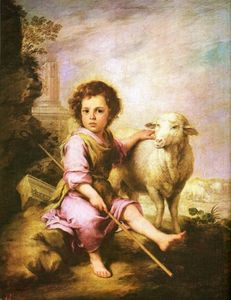
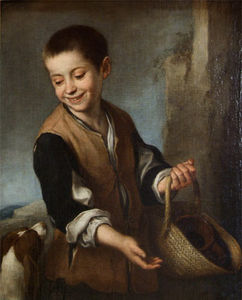
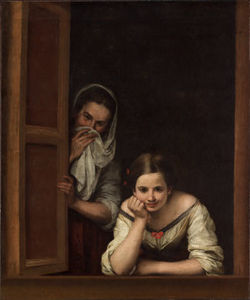
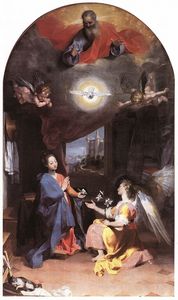
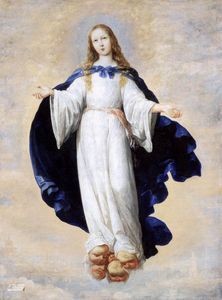
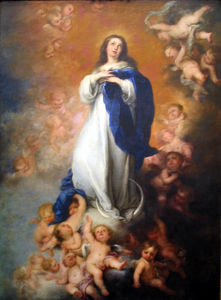
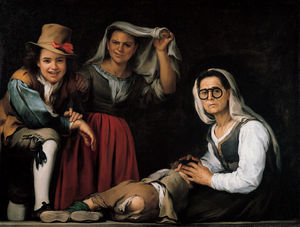
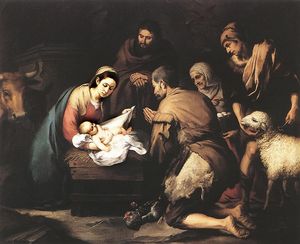
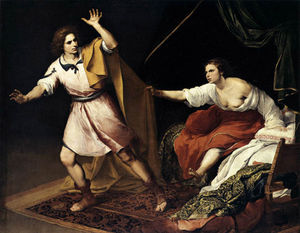
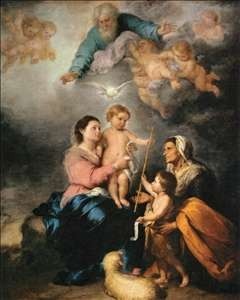
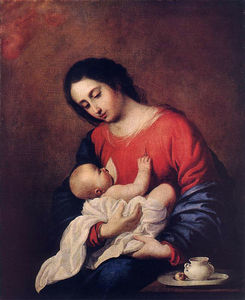
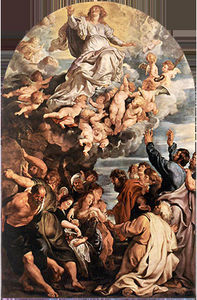
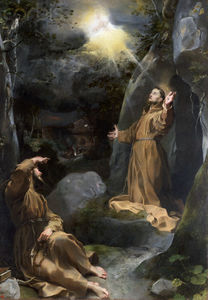
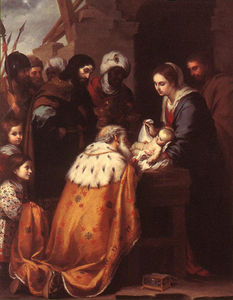
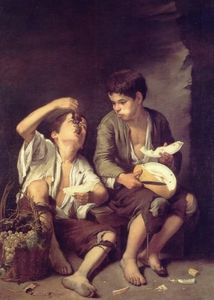
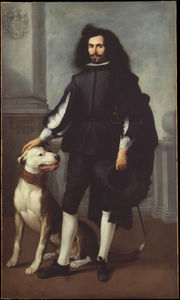
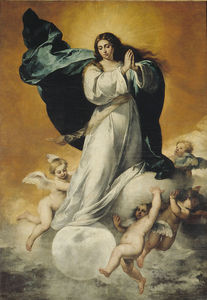

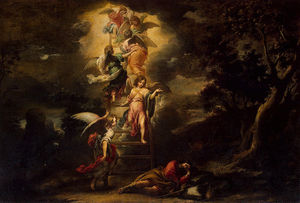
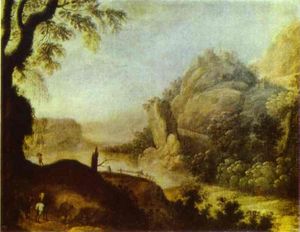
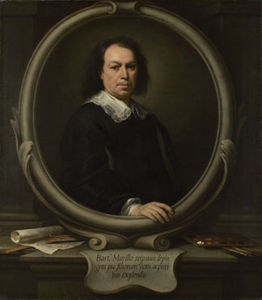
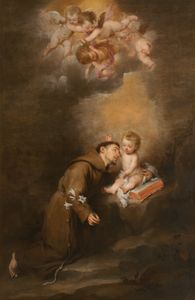
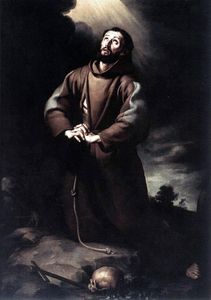
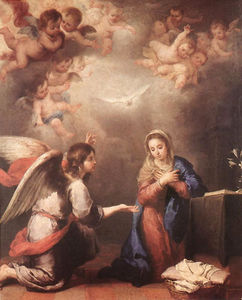
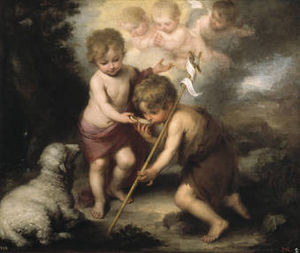
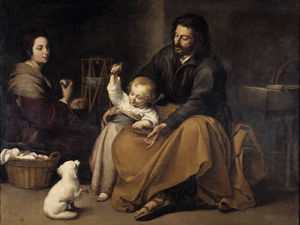
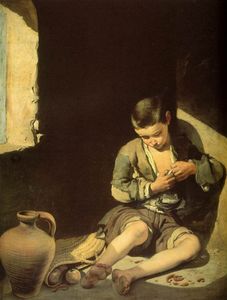

No comments:
Post a Comment